
5350 Pacific Way
Longview, WA 98632
Phone: (360) 423-2493
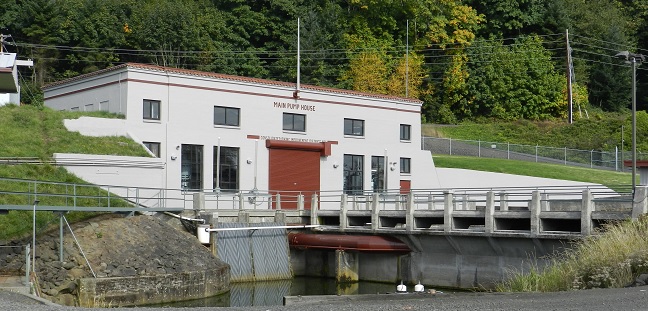
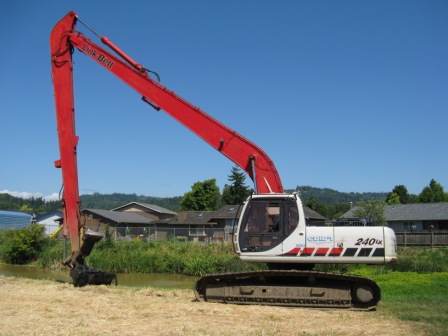 CDID #1 Long Reach Excavator
CDID #1 Long Reach Excavator
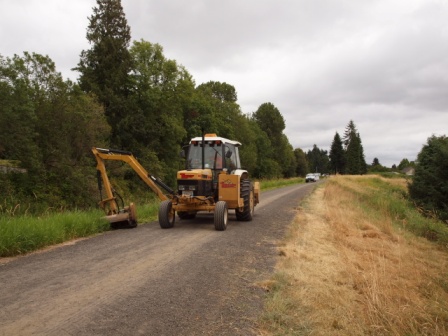 Levee Mowing Operations
Levee Mowing Operations
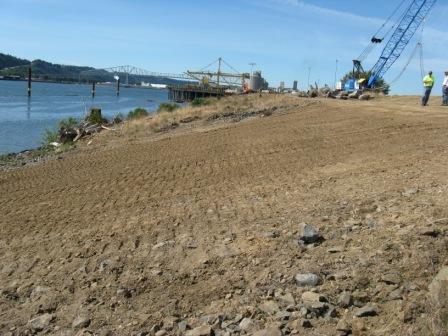 Levee Repar and Reconstruction
Levee Repar and Reconstruction
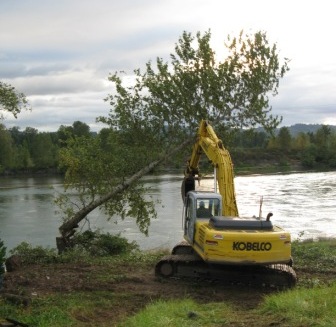
Unwanted Vegetation Removal
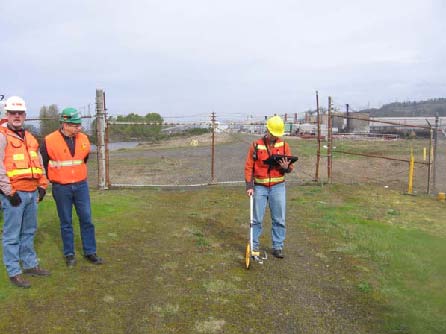 Levee Inspection Team
Levee Inspection Team
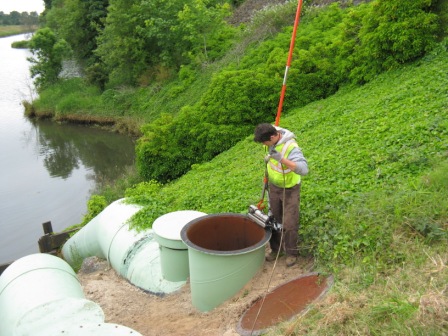 Video Inspection of Discharge Lines
Video Inspection of Discharge Lines
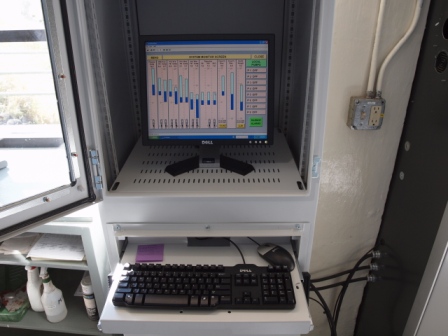 CDID #1 SCADA Pump Station Monitoring System
CDID #1 SCADA Pump Station Monitoring System
 Reynolds Pump Station Outfall Repair
Reynolds Pump Station Outfall Repair
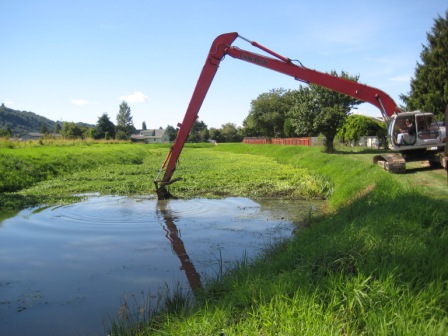 Removing Vegetation from Cutoff Slough
Removing Vegetation from Cutoff Slough
Operations and Maintenance
CDID #1 undertakes a comprehensive operations and maintenance program to ensure that all facilities are at a state of readiness to effectively handle internal stormwater and/or external flooding emergencies. Guidance for these endeavors is provided by both the District's Operation and Maintenance Plan and Emergency Action Plan.
CDID #1 has five full time maintenance emloyees; an operations foreman and four operators who are dedicated full time to District Operations and Maintenance (O&M). The District's maintenance shop and fleet of trucks and heavy equipment provide the tools necessary to keep District operations finely tuned.
In addition to internal O&M resources, CDID #1 maintains on-call contracts with a number of local engineering and surveying firms, electricians, and contractors in order to acquire additional O&M assistance as necessary.
CDID #1 Operations and Maintenance consists of the following components:
Levee System
Vegetation on the levees is controlled through system wide mowing typically at the beginning and middle of the growing season. Areas where soil becomes exposed due to traffic or repair work are promptly reseeded with erosion control grass species. Undesirable vegetation such as trees, shrubs, and invasive and noxious weed species are controlled through machine and hand removal, as well as treating with approved chemicals.
The tops of all levees are maintained with a drivable surface for access. Regular patrols identify issues that could affect access for maintenance or emergency purposes such as unwanted vegetation, illegal dumping, abandoned vehicles, and unauthorized structures.
District personnel also routinely inspect the levee for issues that may affect the structural integrity of the levee and hence its ability to perform adequately during storm events. These issues include, but are not limited to, vehicular damage, root intrusion, erosion, unauthorized construction activities, and animal burrows. Issues of significance are repaired in consultation with the Diking Engineer, and the USACE. Inspection intervals are increased during periods where high water is predicted and encountered, as well as after high water events to ensure no related damage is unaccounted for.
In addition to ongoing inspections conducted by District personnel, The District participates in two inspection programs undertaken by the US Army Corp of Engineers. These programs, identified below, ensure that the O&M work undertaken by the District is in conformance with Federal standards.
Rehabilitation and Inspection Program, ER 500-1-1 - Conducted
annually, this routine inspection takes approximately one day to
drive the levee system and assess whether the flood control works
will continue to provide the intended degree of flood protection and
determines if the maintenance program is adequate.
Periodic Inspection, National Levee Safety Program Act of 2007 - Conducted every five years, this is a more thorough review of all levee and stormwater removal systems. The inspection is conducted entirely on foot, takes approximately four days to complete, and consists of a large multi-disciplinary team of engineers.
Pump Stations
District pump stations are inspected and maintained at regular
intervals to ensure ready and reliable operation. The frequency of
the inspections and necessary maintenance is dependent on seasonal
operational requirements. The stations are visited several times a
week during normal work hours in the high stormwater flow season
from October through June. During large storm events, the stations
are monitored multiple times per day and around the clock if
necessary. Off-season, the stations may be visited as infrequently
as once a week.
Typical maintenance for each station consists of maintaining access,
cleaning up debris and garbage, removing accumulated vegetation from
intake screens, and regular building maintenance. Maintenance
specific to pumping equipment is typical for mechanical and
electrical equipment with all appropriate safety protocols followed.
Such maintenance typically includes; logging pump hours, replacing
fuses and relays, greasing and/or lubing bearings and mechanical
joints, filling oil reservoirs, and keeping equipment clean. Each
pump station maintains an inspection and maintenance checklist/log
that is filled out at each visit.
In order to provide additional safeguards against system failure and oversight of individual pump stations, the District maintains a radio operated Supervisory Control and Data Acquisition (SCADA) system. This system performs real-time tracking of water surface elevations, operational status, and alarm conditions for each facility and provides visual readout to District staff at the District Office, Maintenance Office, and Main Pump Station. This system enables District staff to respond quickly to issues that need attention and logs data that could be useful for trouble shooting system failures if they occur.
Sloughs, Ditches, and Drains
The sloughs, ditches and drains are maintained on a regular rotational basis. Maintenance work involves cleaning ditches of mud and debris, clearing and removal of vegetation and mowing on the banks and areas above water level, and repairing ditch banks that have eroded or slumped. The majority of ditches and drains are accessible by vehicle along at least one bank and maintenance is performed using excavation equipment (backhoe, track hoe, etc.) with the removed material being applied to the drainage way bank or placed in a dump truck and hauled to an approved disposal site. Some submerged vegetation is treated chemically. These treatments are contracted to a State certified contractor for performing this type of work and are performed in compliance with local, State, and Federal laws governing such operations.
Several ditches contain bypass structures with mechanical gates and/or trash racks and screens. All mechanical equipment is lubricated and operated at regular intervals to ensure reliability when needed. Grates and screens are inspected frequently and cleaned of all debris. Inspection intervals are increased during periods of rainy weather and significant storm events.